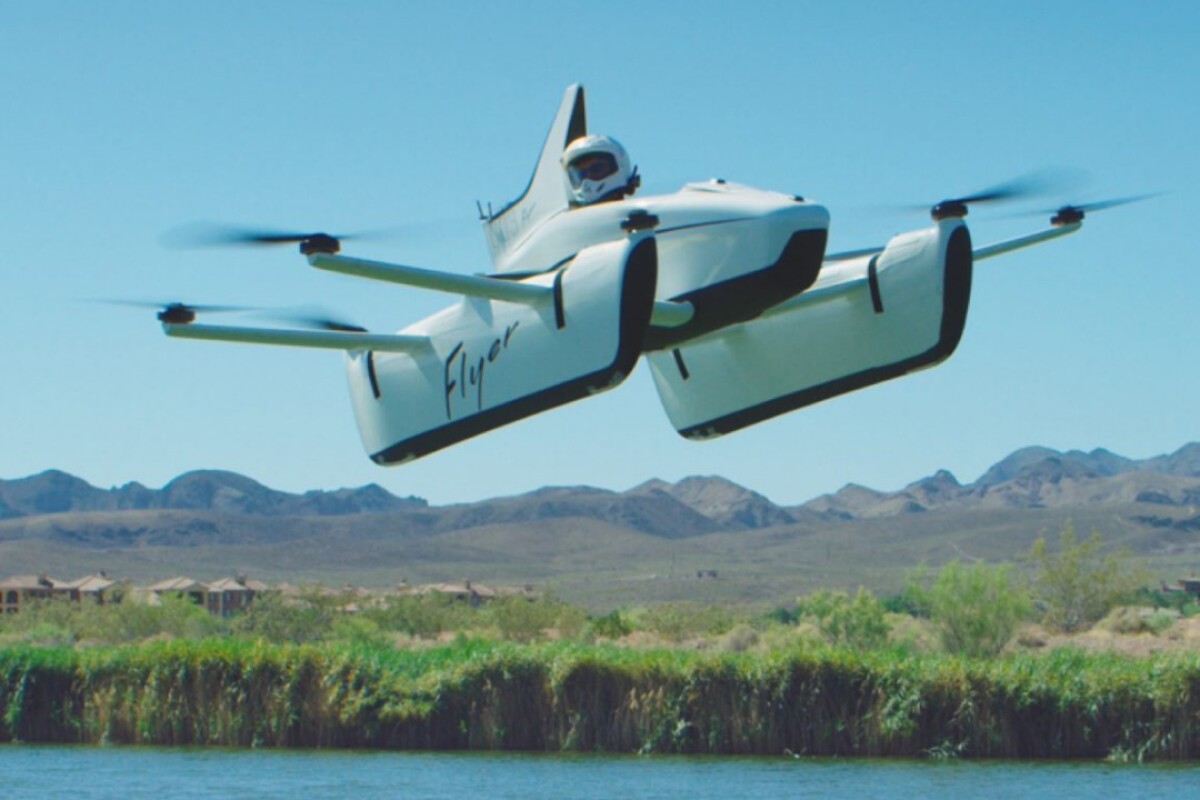Larry Page and Sebastian Thrun's personal flying carpet project has been grounded, as the Kitty Hawk company turns its attention to a larger, faster, longer range aircraft with better commercial potential in the emerging eVTOL air taxi market.
The Flyer was to be the hooligan sports car of the eVTOL world, a single-seater manned multirotor with pontoon floats for aquatic vertical takeoff and landing. It looked schmick, it flew for up to 20 minutes on a charge, and it'd do around 20 mph (32 km/h), swooping and banking over the water up to a limited altitude of around 10 ft (3 m).
Certainly, the airframe could take a person much higher or fly over land, but if you can't work out why that's a bad idea at this early stage, perhaps this video will clarify things.
Best of all, it was incredibly easy to fly, no harder than a DJI Phantom drone. GPS-stabilized and aided by banks of inertial sensors, it required no more than a couple of hours of training to get you in the air. As a Part 103 ultra-lightweight under FAA regulations, you didn't need a license to fly it provided you stayed away from certain areas. Kitty Hawk once trained 50 people to fly it in a single day.

111 of these little fun machines were built, and they made over 25,000 successful flights. We're certain every one of the many unlicensed folk that got to fly one will remember that experience until the day they die. The company accepted pre-orders on them as leisure toys and experience machines.
But it was not to be. In a blog post last week, Alex Roetter, President of Flyer, and Sebastian Thrun, CEO of Kitty Hawk, announced the closure of the project.
It was always going to be tough to make a business out of a small sports flyer like this one. Impractical and illegal for most practical use cases, it was destined to be relegated to a service life of skimming over lakes. It's hard to pay for an aircraft development program on the back of cheap experience tickets and the odd rich buyer.
The opportunity for eVTOLs in the coming decades is clear: get in on the urban air taxi market. Quieter, simpler and vastly cheaper than helicopters, eVTOLs are expected to become a serious three-dimensional commuting option within this decade, hoisting you far above congested traffic and depositing you at 'vertiports' dotted around cities. A healthy air taxi service has a genuine chance to become the kind of healthy revenue stream that could keep these companies afloat.

The company's other small eVTOL, the 2-seat Cora aircraft, has been spun off into its own company for taxi service trials in New Zealand, and thus Kitty Hawk's attention turns to its other remaining project, which is known as Heaviside. Another single-seater, Heaviside is built much more like an airplane, and combines its vertical takeoff and landing capabilities with winged cruise capabilities thanks to eight tilting rotors.
As a platform, it's capable of much higher speeds and altitudes, and longer ranges than the Flyer, and it's not a big stretch to envision it being upgraded to carry two or more passengers in subsequent iterations. It's certainly much closer to what the rest of the leading contenders are starting to look like.
So farewell, little Flyer, we're certain there'll be more of these single-seat fun-oriented aircraft in the coming years, what with literally hundreds of companies working on elbowing their way into the manned multirotor market, but the Flyer was the first one up and running and offering flights to unlicensed pilots, and that is a significant place in history. Enjoy a video below.
Source: Kitty Hawk





